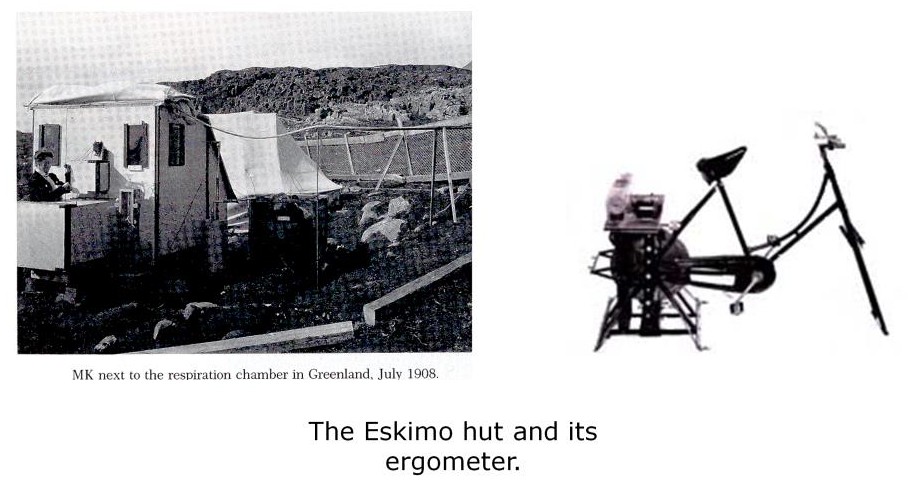
1913 – Made the connection between diet and the type of metabolic function of cells by studying the respiratory patterns of Eskimos. Developed the exercise bicycle (ergometer) to study the connection between muscular work, oxygen consumption and diet. This was the beginning of exercise physiology.
1914 – Discovered the relationship between temperature and metabolic rate and documented the composition of alveolar gas.
1919 – Using a device he called the spectrocomparator, he determined the per cent of saturation of blood hemoglobin with O2 and CO2. “THE SPECTROCOMPARATOR, AN APPARATUS DESIGNED FOR THE DETERMINATION OF THE PERCENTAGE SATURATION OF BLOOD WITH OXYGEN OR CARBON MONOXIDE. BY AUGUST KROGH. The Journal of Physiology, Volume 52, Issue 5, 25 MAR 1919 (From the Laboratory of Zoophysiology, Copenhagen University.)” This year he also published his work on the structure and function of capillaries (part of which would later become known as the Oxygen Pressure Field Theory) for which he won an unshared Noble prize in 1920.
1920 – He discovered the relative value of fat and carbohydrates as sources of muscular energy, thus describing the respiratory quotient.
1923 – At the request of Banting, MacLeod and Best, Krogh was the first to develop a practical way to mass-produce insulin. This not only provided an invaluable service to mankind, but also at the same time saved the life of his own wife, Marie Krogh, who developed diabetes just a few years earlier. Marie Krogh was a medical doctor and a famous scientist in her own right. Based on work done by AK, Marie developed minimal nutrition standards for children and was instrumental in getting government support to promote these standards in the Danish schools. This idea is applied in all industrialized countries today. In the USA it is overseen as the USDA Minimum Dietary Requirements. She is also credited with developing ‘biological standardization’ which was first used to standardize dosages for medications such as digitalis; changing it from a deadly poison to the most useful of cardiac medications.

Perfusion Theory is an educational platform for the Oxygen Pressure Field Theory (OPFT). August Krogh’s theoretical concept of the oxygen pressure field is explained and then applied to clinical applications in perfusion practice.